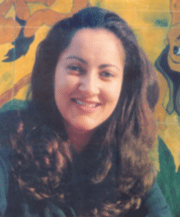 Each period of history is defined by the tools invented in it and the way in which they were used. The yet recent transition into a new century is a good time to define how learning, and perhaps the learner, has changed. The wonder communication medium that is the internet has expanded access to information, removing teacher and student dependency on a limited range of information sources. Education is no longer bound by the limits of the teacher, textbook, or reference books in the school library. It is limited only by the student’s interest and ability to read proficiently.
Each period of history is defined by the tools invented in it and the way in which they were used. The yet recent transition into a new century is a good time to define how learning, and perhaps the learner, has changed. The wonder communication medium that is the internet has expanded access to information, removing teacher and student dependency on a limited range of information sources. Education is no longer bound by the limits of the teacher, textbook, or reference books in the school library. It is limited only by the student’s interest and ability to read proficiently.
Therefore, in the new millennium, parents, teachers, would-be-teachers, all have a vital duty to thoroughly teach the art of reading, the fundamental skill which is the passport to all learning. With the existing ‘skills and drills’ rote type of teaching and learning environments persisting in the great majority of schools, the ability to read proficiently will ease the entry of children into the world of self-learning that is emerging with advances in technology and the dawning of a new information age. Beyond that, the ability to read quickly with understanding is an invaluable skill which once mastered, can be a source of great enjoyment and continuous learning in adulthood. In the circumstances, it may be useful to discuss some strategies that parents and teachers can adopt to develop reading proficiency in young children just entering the world of the printed word.
Theories and methodologies regarding the process of reading continue to evolve and change. However there is unanimity among educationists that practice is of prime importance to any reading development programme. Differentiated reading strategies (phonics vs. look-n-say) are all important as children have differing learning styles, and therefore may benefit selectively from one or both methodologies. Therefore any good reading programme must address both strategies.
Sight reading (look-n-say) involves the learning of new words and imprinting them upon the long-term memory of pupils. The belief of this pedagogy is that words, like pictures, are symbols. If a child can see a picture of a ball and say ‘ball’, he can also recognise the written word ‘ball’. This process develops the visual recognition of words that children need to learn to become fluent readers.
Selecting appropriate books and making the stories within them exciting is of prime importance to stimulate early reading habits. Therefore, choose a story that you like and that you can ‘hear’ yourself reading and practice reading in front of a mirror, including the technique of holding the book at an angle to enable your pupil to see illustrations all the time.
Moreover, it’s advisable to evaluate authors’ choice of words, consider why a particular word has been chosen, and use this understanding to dictate the timbre of voice, expression and energy you will use while reading. Voice can be modulated according to the text. Therefore the readers can whisper if the characters do, speed up if someone is in a hurry, shout out loud when a ghost says ‘boo’, or pause dramatically in appropriate parts. Using your voice to complement the text and illustrations creates magic while reading aloud to children.
As a prelude to a reading session, it’s important to deliberate on how you will deliver the first sentence. It has to hook your pupil(s) immediately and draw her into the story, just as the first sentence of an adult title has to hook us as readers. Similarly, practice the way you deliver the last line so that the story is drawn to a satisfactory conclusion. Comments Mem Fox who writes extensively on making reading and learning exciting for children: “We can achieve great things emotionally if the last line is a definite dismissal, a farewell. As we say it, we’re releasing our audience from their contact with us.”
Once you have worked on word delivery and emphasis, consider the issue of body language. You need to use your eyes and facial expressions to convey shock, surprise, fright, delight, or sadness. Emoting and gesticulating arouse curiosity and interest. Moreover learning to read is greater fun with active participation. Teachers must invite children into books and stories, pause at appropriate places and think aloud about what might happen next, highlight clues within the narrative to build up expectations and participation.
Of course parents and teachers aren’t trained stage actors. Therefore if your tongue trips you up, re-read the sentence. If there are names or words you had to practise, tell them that you did so. Use your audience to model the strategies you use. Remember that many children perceive themselves as poor readers because they make mistakes, not realising that everyone miscues and makes mistakes.
Contrary to popular belief, love of books and reading doesn’t come naturally to children. They have to be led into the world of books and reading by parents, teachers and peers. As an eminent American educationist famously remarked, “Few children learn to love books by themselves. Someone has to lure them into the wonderful world of the written word; someone has to show them the way.” That someone is you.
(Lina Ashar is the chairperson of Kangaroo Kids Ltd which manages 57 pre-schools in 15 cities countrywide)